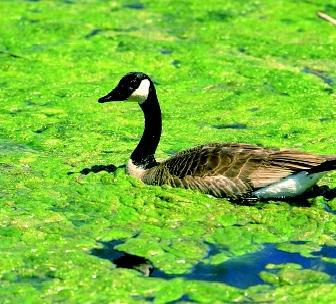Water Pollution Effects
Waterborne Infectious Diseases
Waterborne infectious diseases are one of the most serious effects of water pollution, especially to people living in developing countries, where there are little or no sanitation available. Waterborne diseases occur when micro-organism or parasites from contaminated water are transmitted to humans. These includes typhoid, intestinal parasites, and diarrheal diseases caused by bacteria.
However, that does not mean that people living in developing countries are free from waterborne diseases. Transmission of disease agents such as bacteria via contaminated but poorly treated municipal water is common. An estimated seven million Americans are taken ill by contaminated water every year.
Going to beaches may sound fun, but due to outdated monitoring methods of the water, beachgoers are vulnerable to rashes, pink eye, respiratory infections, diarrhea, vomiting, and many more illnesses.

Nutrient Pollution
Nutrient pollution... too much nutrients in water? WRONG! Nutrient pollution occurs when nutrients are leaked into coastal areas through agriculture and waste disposal. Nutrient pollution is one of the most widespread environmental problems in the coastal areas. Once nutrient pollution reaches the coastal zone, algae can grow at an incredible rate, which can have direct toxic effects and results in low-oxygen conditions.
Some kinds of algae are toxic. Overgrowths of these algae is dangerous. Zooplankton eat the toxic algae and begin passing the toxins up the food chain, affecting any organisms that are up the food chain. The outcome... illness and sometimes death. Non toxic algae can also cause many problems. It reduces water clarity, making it hard for marine creatures to find food and blocking the required sunlight for water plants to grow.
Even when the algae overgrowth dies, problems still arise. the algae decomposes, a process which uses oxygen from surrounding water. There are extreme cases where decomposition process takes enough oxygen out of the water that the oxygen level is way low to support marine lifes.

Marine Debris
It simply means trash in the ocean. Marine Debris is one of the most pervasive marine pollution problem. Debris includes trash and garbage thrown overboard by ships —plastic bottles and bags, styrofoam, etc. Marine creatures will swallow this trash items thinking it is food. For example, sea turtles will eat a plastic bag thinking it is a jellyfish. The bag can cause a blockage or even death.
Even lost or discarded fishing equipments can cause many problems. Line, ropes, nets and many other fishing gears can get entangled or wrapped around marine creatures, causing drowning.
Here's the good news and the bad news. Good news is, after many years of degradation at sea, plastic breaks up into smaller pieces. Bad news? The plastic has not biodegraded but rather has disintegrated into very small pieces. This means that tiny marine creatures near the bottom of the food chain are now digesting bits and pieces of plastic. How far up the food chain the stuff will go is still a ?.
On my next post, I am going to continue talking about effects of Water Pollution. A reminder to all.
PLEASE DO NOT TREAT OCEANS LIKE DUMPS, WHAT GOES AROUND, COMES AROUND.

No comments:
Post a Comment